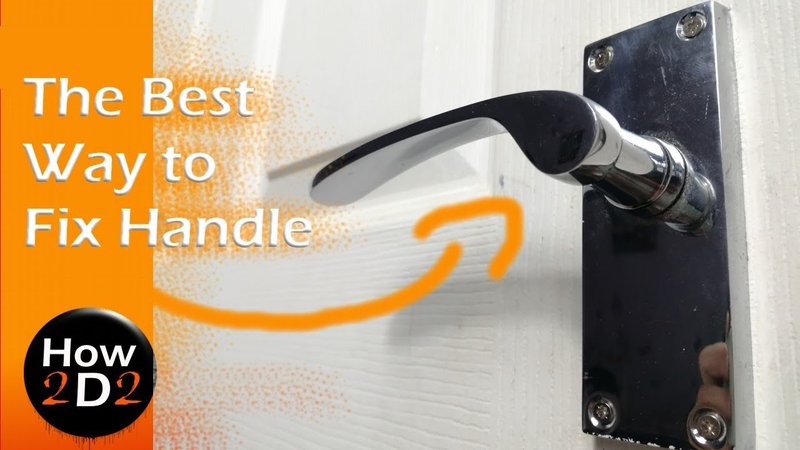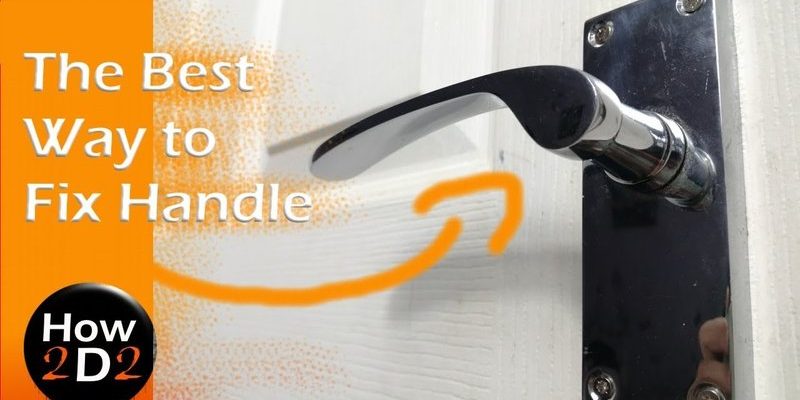
In this guide, we’ll walk through the steps to repair a loose interior door knob, focusing on the spindle—the metal piece that connects the knob to the door. We’ll cover different types of knobs, common issues that cause looseness, and how you can get that knob feeling as good as new again. So grab your toolbox, and let’s dive in!
Understanding How Door Knobs Work
Before jumping into repairs, it helps to understand how a door knob functions. Think of it like a simple machine. When you turn the knob, the spindle rotates, which in turn moves a latch inside the door, allowing you to open it.
Most interior door knobs come in two main styles: knob and lever. While their mechanisms are similar, their structures differ slightly, so it’s crucial to identify what type you’re dealing with. If your door knob is feeling loose, it’s often because the screws securing it to the spindle have come loose or the spindle itself is worn out.
Let me explain: the spindle is like the backbone of the door knob. If it’s not in good shape, the knob won’t function properly. A loose knob often signals that it’s time for some DIY tinkering.
Common Reasons for Loose Door Knobs
There are several factors that can lead to a loose door knob. Here are some of the most common culprits:
- Worn-Out Screws: Over time, screws can loosen due to repeated use, causing the knob to wobble.
- Worn Spindle: If the spindle itself is old or damaged, it may not hold the knob securely.
- Installation Issues: If the knob wasn’t installed correctly, it might never have been secure.
Understanding the root cause will help you know exactly what to address when you sit down to fix it. If you’re unsure, it’s okay! We’ll go through each of these issues step-by-step to help you troubleshoot effectively.
Gathering Your Tools
Before getting started, it’s a good idea to gather your tools. Here’s a simple list of what you’ll need:
- Flathead screwdriver
- Phillips screwdriver
- New screws (if necessary)
- Lubricant (optional)
Honestly, having everything on hand will make the process smoother and less frustrating. You might even find that some of these tools are already in your kitchen drawer or toolbox, making this an easy chore to tackle.
Removing the Door Knob
Now that you have your tools ready, it’s time to remove the door knob. This is usually a straightforward process. Follow these steps:
1. Locate the screws: Most door knobs have screws either on the side or the base. If they’re hidden, look for a small notch or a cover plate that you can pop off.
2. Unscrew the knob: Use the appropriate screwdriver to remove the screws. Keep them in a safe place so you won’t lose them.
3. Take off the knob: Gently pull the knob away from the door. If it’s stuck, wiggle it a little until it comes loose.
Removing the knob might feel intimidating, but take it one step at a time. Understanding the mechanism will help you troubleshoot the issue more efficiently.
Inspecting the Spindle and Other Components
Once you have the knob removed, it’s time to inspect the spindle and other components. Look for signs of wear and tear:
– Is the spindle intact, or does it seem worn down?
– Check if the screws holding the knob to the spindle are damaged or stripped.
– Look for any debris or dirt that might be causing the mechanism to jam.
If the spindle looks worn or damaged, you might need to consider replacing it. This part is usually not expensive and can be found at most hardware stores.
Fixing the Loose Knob
Here’s where the magic happens! Depending on what you found in the previous step, you can take one of the following actions:
– Tighten the screws: If the screws are just loose, give them a firm twist with your screwdriver. Make sure they’re snug, but don’t over-tighten them as that can strip the threads.
– Replace the screws: If the screws are stripped or damaged, take them to the hardware store and ask for replacements. It’s an easy fix that can improve the knob’s functionality significantly.
– Lubricate the spindle: If everything looks good but the knob still feels stiff or wobbly, apply a little lubricant to the spindle. This can help smooth out the movement.
Taking these steps can help you get that snug, secure feeling back in your door knob, making it feel solid again.
Reassembling the Door Knob
After you’ve made your repairs, it’s time to put everything back together. Here’s how to reassemble your door knob:
1. Align the spindle: Line up the spindle with the hole on the door and push the knob back onto it.
2. Insert screws: Place the screws back in their original positions and tighten them using the screwdriver.
3. Test the knob: Before you finish, give the knob a test turn. It should feel secure and function smoothly without any wobble.
This step is really important to ensure everything is back in its place. A quick trial can save you time and frustration later!
When to Seek Professional Help
Sometimes, despite your best DIY efforts, the knob might still feel loose or malfunction. Here are a few signs that it might be time to call in a professional:
– If the spindle is broken and needs to be replaced, it might be beyond your skills.
– If the door frame is warped, leading to alignment issues.
– If multiple knobs in your home have similar problems, you might need a larger solution.
Remember, it’s perfectly fine to ask for help when you feel stuck. Sometimes, knowing your limits can save you time and energy.
Maintaining Your Door Knobs
Once you’ve successfully repaired your door knob, you want to keep it in good shape, right? Here are some easy maintenance tips:
– Regular inspections: Check your door knobs periodically for looseness or damage.
– Keep it clean: Wipe down the knobs with a soft cloth to remove dirt and dust.
– Lubricate as needed: A touch of lubricant now and then can help maintain smooth operation.
Taking these simple steps can prolong the life of your door knobs and keep them functioning well.
In conclusion, repairing an interior door knob that feels loose on the spindle is a task anyone can tackle with just a few tools and a little time. From understanding the basic mechanics to knowing when to call for help, you now have all the information you need to handle this problem with confidence. So go ahead, roll up your sleeves, and make your home feel that little bit more secure!
